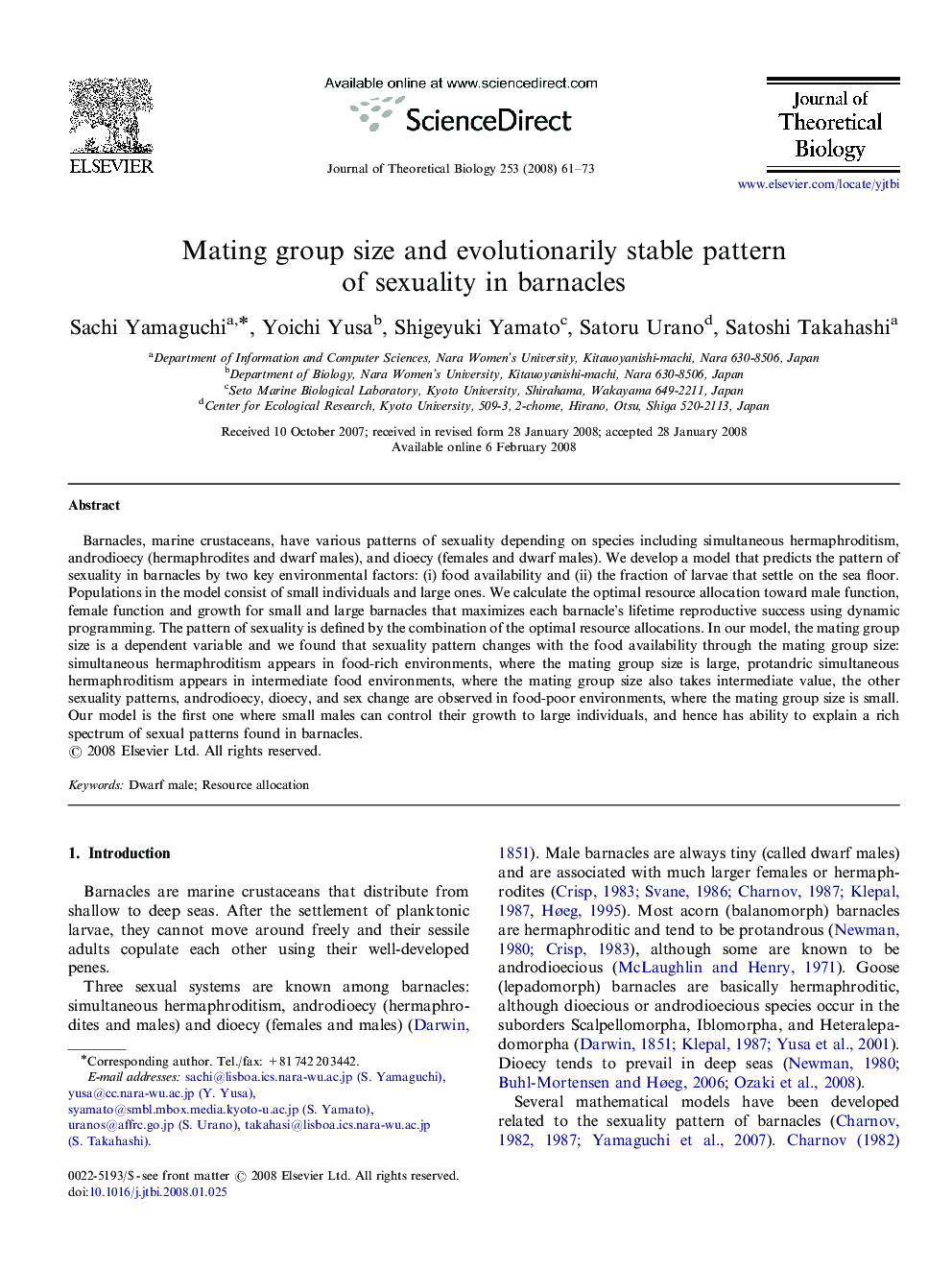| کد مقاله | کد نشریه | سال انتشار | مقاله انگلیسی | نسخه تمام متن |
|---|---|---|---|---|
| 4498418 | 1318981 | 2008 | 13 صفحه PDF | دانلود رایگان |

Barnacles, marine crustaceans, have various patterns of sexuality depending on species including simultaneous hermaphroditism, androdioecy (hermaphrodites and dwarf males), and dioecy (females and dwarf males). We develop a model that predicts the pattern of sexuality in barnacles by two key environmental factors: (i) food availability and (ii) the fraction of larvae that settle on the sea floor. Populations in the model consist of small individuals and large ones. We calculate the optimal resource allocation toward male function, female function and growth for small and large barnacles that maximizes each barnacle's lifetime reproductive success using dynamic programming. The pattern of sexuality is defined by the combination of the optimal resource allocations. In our model, the mating group size is a dependent variable and we found that sexuality pattern changes with the food availability through the mating group size: simultaneous hermaphroditism appears in food-rich environments, where the mating group size is large, protandric simultaneous hermaphroditism appears in intermediate food environments, where the mating group size also takes intermediate value, the other sexuality patterns, androdioecy, dioecy, and sex change are observed in food-poor environments, where the mating group size is small. Our model is the first one where small males can control their growth to large individuals, and hence has ability to explain a rich spectrum of sexual patterns found in barnacles.
Journal: Journal of Theoretical Biology - Volume 253, Issue 1, 7 July 2008, Pages 61–73